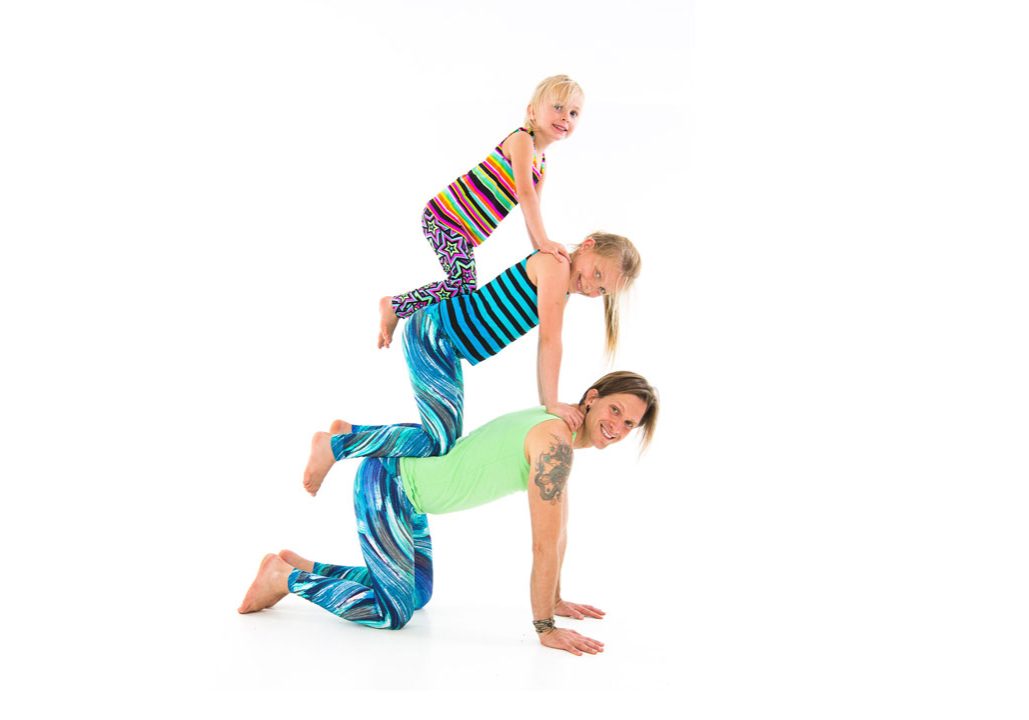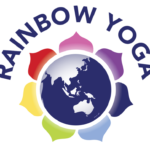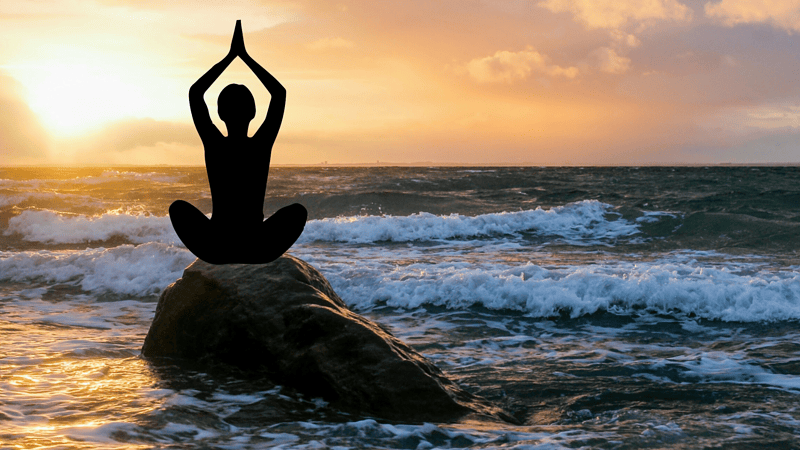
Why Yoga for Kids?
What are the benefits of yoga for children?
Gymnastics, swimming, dance, martial arts, basketball, soccer… There are already many choices available to parents for physical, movement-based extracurricular classes for their children. What makes yoga different? And what are the benefits of yoga for children?
Yoga is an ancient science that helps to create health and well-being by building awareness, strength, and flexibility in both mind and body. Yoga is an egalitarian practice, bestowing its benefits on every practitioner, regardless of his or her physical abilities.
Yoga postures, or Asanas, are practised by people of all ages and in many different states of health and fitness. Practitioners have been long attesting to the benefits of yoga including stress and pain relief, improved circulation and digestion, better body alignment, increased concentration, deeper, more relaxed breathing, and a sense of well-being and inner peace. The question is: does yoga hold these benefits for children as well? At Rainbow Kids Yoga, the answer is Yes, and more!
Yoga for Kids is a fun way for children to develop important skills in a non-competitive environment. Even at a young age, children often feel pressure at school academically and socially, plus the added pressure of competitive organized sports. It is easy for girls and boys to become overly self-critical, and lose confidence in themselves as they grow and transform both physically and mentally. Yoga is a great remedy; there is no judgment in a yoga class about how a child does a pose or plays a game. Doing a pose ‘perfectly’ is not the aim of yoga, which nurtures a child’s inner strength and self-acceptance.
This nourishing atmosphere encourages children to relax and have fun while they develop not only strength, coordination, flexibility and balance, but also body awareness, better focus and concentration, and self-confidence. In fact, a 2003 study by the University of California of children in a Los Angeles school found that children who had frequent yoga instruction showed significant increases self-esteem, as well as overall fitness, academic performance, and even a decrease in discipline problems as students felt more relaxed and were more aware and respectful of their peers!
In Rainbow Kids Yoga classes, there is a balance between spontaneity and structure, so that children learn to listen to themselves and each other as well as express themselves creatively. Interweaving story, song, games and poses, children learn in a multi-sensory environment, exploring kinesthetic, visual, and aural learning.
Children are also encouraged to respect and pay attention to their bodies, making sure each pose feels good, and coming in and out of positions when they feel ready (something most adults have a hard time doing!). As children grow and their bodies change quickly, this becomes an important skill. Listening to yourself is not just a method to avoid injury, but also a way to stay out of trouble when inflicted by peer pressure.
But what makes Rainbow Kids Yoga classes different from other movement-based activities incorporating music and games?
First, there is no other form of exercise that offers such a wide range of movements as yoga does. While practising Children’s Yoga, we bend forward and back, we twist and side bend, strengthen and stretch, balance and even spend some time upside-down.
Besides the obvious benefits of yoga in helping us be stronger and more flexible, Yoga for Kids also helps in developing coordination, balance, and many other important motor skills. Yoga can even make us a bit taller by improving our posture and stretching and lubricating our muscles and joints.
Also, a Kids Yoga class offers both really fast and active play while warming up or playing with yoga poses, and quiet and focusing time while holding certain poses or relaxing. Besides, as time goes on, the whole practice is done with heightened awareness to our body and what parts of it are being stretched, strengthened or relaxed during the practice.
Bringing more awareness to our body helps us to love and appreciate and even be fascinated with this miraculous creation, as well as be more fully present during our day and live our life to the fullest. Being present helps kids retain this wonderful ability of being absorbed in the one thing they are doing now without being burdened or distracted by what happened before or worrying about what might happen in the future. It’s a way of doing things not just better, but also stress-free.
Secondly, Yoga for Children exercises not only our body but also our breath and even our mind. Before, after and while in poses the children are encouraged to pay attention, regulate and deepen their breath. Having more oxygen in our body enhances our mood and our ability to focus, as well as increase our capacity to relax both our body and our mind.
Many yogic exercises, adapted to fit children, assist us in consciously training our mind to be creative, sensitive, inquisitive, expanded, focused or still at will. It’s a process for kids just as much as it would be for adults, but learning to use our mind is an indispensable skill if we want to gift our kids with a happy life.
Thirdly, the additional benefit to Kids Yoga, rather than Adult Yoga, is that it involves interaction. In the class, kids are not isolated on their own yoga mats. Partner and group poses, cooperative games, self-expression and creativity, are the more common sight in a classroom. Developing social skills is a part of, and as important as, self-development.
In a Kids Yoga class, we learn valuable communication skills, verbal and non-verbal, and realize more and more our interconnectedness and interdependence; an understanding that is essential for a healthy social life. Emotions that we process and skills that we learn in the relaxing environment of a yoga class can serve us greatly in more stressful times in our life.
And we do it all without big lectures. It is all discovered through doing. And it is, not just more beneficial, but also always more fun to do it together! Interacting simply increases the value of the practice, and of life itself.
Fourthly, in Children Yoga we learn not just about ourselves and about our friends, we also learn about the world around us. A central tenet of yoga practise is respect and honour: for ourselves, for each other, and our environment. In a yoga class, children often go on a magical journey around the world and learn about other countries and cultures. And since many of the yoga poses are of animals, children also learn about different animal habitats, endangered species, and even about other global issues such as recycling! Children have an innate affinity with the natural world and animals in particular. They understand and enjoy learning about and caring for the earth and its inhabitants, both human and animal.
Yoga has been evolving maybe since the beginning of time, but the changes and innovations yoga has experienced in the last 60 years are as massive as the changes we’ve seen in science and technology during this time period. Yoga for kids may be a new thing, but it is as natural for kids to play with as it is for them to run and jump. Stretching and balancing while imitating nature with your body has probably been a way to explore the world longer than recorded history.
In fact, yoga is a great tool to learn about absolutely anything! What better way is there to explore a subject then to move through it using creative yoga poses that are truly so good for you? History, geography, science, literature, and even languages can all be learnt in this supportive and encouraging environment.
In this way, yoga is a holistic practice, with an inner as well as outer focus. But most importantly (at least for the kids), yoga is fun!
Yoga for Children cannot be taught like yoga for adults. Vegetables are good for you, but what will you do with them if you don’t have teeth to chew them? Blend them of course! It is the same with Yoga for Kids, you’ll need to start from where they are and teach it to them in a way that can easily be accepted and comprehended by them. To start with, you will simply need to make them all excited about it!
Both yoga teachers and parents need to adjust their expectations when introducing yoga to kids. If you expect the kids to do the poses perfectly from the beginning, or even to do all of the poses all the time, you will be greatly disappointed. Exploring different and creative ways to do a pose is a part of the learning process. Having space to be creative, invent new things, dive into our imagination, play and even be a bit wild are more important for a child’s evolution than meditating.
It might be less comfortable for some adults to allow this in a classroom, but letting go of our instinct to control the kids behaviour and our expectations of them doing exactly what we say all the time allows the kids the freedom they need to find who they are.
If you wish to have a supportive and fun environment for the kids to explore the ancient art of yoga, you’ll do better if you let the children co-create the class with you. Give them choices, follow their lead for a bit and they’ll let you be the leader too.
We spend most of our childhood and youth learning, but there are many important life lessons that we miss out on at school. In the mainstream education system we’ll rarely receive tools that will help us be a happier or a healthier person; we don’t learn how to release tension or how to focus and, in fact, we are not even taught how to study.
Yoga is much more than yoga poses; it is a way to discover not just our bodies, but also our inner world. We experience this universe through our minds and our hearts, so being able to consciously relax, brighten, uplift and focus ourselves is a vital ability. It is never too early (or too late) to embark on this self-discovery journey of yoga!





